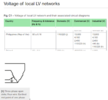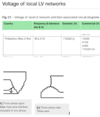A few motor plates the all suggest the delta is the 230 and Star 400?
Whilst Im on it, can I ask another couple of basic questions
If we were to connect a single phase motor we could us either a 230v or 400 V coil, as the 230v could pull in the contacts, with a neutral to the coil? and a neutral ran through the spare contactor (5)
If it were a DOL (without neutral for the coil A!-A2) connecting a 3 phase motor, the coil would HAVE to be 400V and the coil would connect between Two of the phases.
images awaiting moderation.....
Whilst Im on it, can I ask another couple of basic questions
If we were to connect a single phase motor we could us either a 230v or 400 V coil, as the 230v could pull in the contacts, with a neutral to the coil? and a neutral ran through the spare contactor (5)
If it were a DOL (without neutral for the coil A!-A2) connecting a 3 phase motor, the coil would HAVE to be 400V and the coil would connect between Two of the phases.
images awaiting moderation.....
Last edited:



